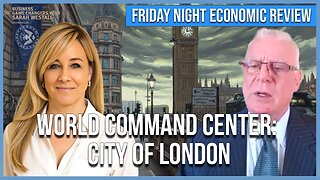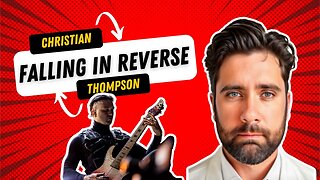Premium Only Content

Gravity Unveiled: The Mind-Blowing Secrets of General Relativity!
In this lecture, we will conclude our exploration of general relativity. Previously, we discussed the principle of equivalence, which posits that inertial mass equals gravitational mass. This concept serves as the foundation for Einstein’s theory of general relativity, which asserts that all freely falling frames of reference observe the same laws of physics. Consequently, if one is in a uniform gravitational field and in free fall, the experience of physical laws is indistinguishable from that of an observer in deep space, far removed from any gravitational influence. This leads to a fundamental shift in our understanding of relative terms and observations within different frames of reference. One may find themselves in a freely falling frame, such as a spaceship accelerating away from a star or planet. Within this context, all laws of physics remain consistent and identical. To comprehend the implications of mass, we must consider how one mass influences another nearby mass to accelerate, which we recognize as gravity. Special relativity indicates that distances and times are measured exclusively between uniform frames, emphasizing that distances and times are intrinsically linked. However, special relativity concerns itself with uniform motion, where one frame moves uniformly relative to another without acceleration. In contrast, general relativity introduces the concept of non-uniform motion, as a freely falling frame experiences acceleration due to gravity. Within this framework, the geometry of spacetime in special relativity is characterized as flat, whereas in general relativity, it is described as curved. Thus, we must examine the implications of curved spacetime and its effects on motion. Newton’s ideas culminated in the least action principle, which posits that an object moving from one point to another does so in the least amount of time when freely falling. However, Einstein altered this principle, asserting that objects move along the shortest paths between two points in spacetime, which minimizes the length of the path rather than merely the time. As we transition into discussing spacetime, we must incorporate geometric concepts, as geometry involves measurements in three-dimensional space—left, right, forward, backward, and up and down. The integration of time into this framework leads us to a more complex understanding of geometry itself. In a flat spacetime scenario, the shortest path is relatively straightforward. Imagine an object moving along a closed path on a flat surface, such as a table. By maintaining a consistent direction while moving from one point to another, the path remains direct. In contrast, consider a curved path on a globe; if we move an object across the globe while maintaining its direction, we will observe a change in orientation due to the curvature of the surface. This phenomenon can be illustrated by parallel transport, where an object is moved along a curved path while attempting to maintain its orientation. For example, if a pencil is placed on the surface of a globe and moved from one point to another while keeping the pencil pointed in the same direction, the orientation of the pencil will change by the time it returns to its original location. This rotation illustrates the concept of curvature in spacetime. Within a freely falling frame, the laws of physics remain consistent, and no rotations are observed. However, from an external perspective, one may witness the effects of acceleration and fictitious forces acting upon a freely falling object. Parallel transport serves as a defining measure of curvature, enabling us to determine whether an object returns to its original orientation after traversing a closed path. When this does not occur, we recognize the existence of curvature in spacetime. Einstein’s least action principle implies that the path taken is the shortest possible in terms of spacetime, even if this path results in an apparent rotation of orientation. Newton would attribute this rotation to the gravitational force acting upon the object, leading it to deviate from its original trajectory. In contrast, Einstein argued that, in curved spacetime, objects follow the shortest paths without the necessity of forces acting upon them. The equivalency of freely falling frames reinforces this notion, indicating that whether one is in a gravitational field or in deep space, the path followed is the same. Although one experiences weight due to the Earth’s gravitational pull, this sensation arises from the interaction with the ground, which exerts an equal and opposite force in accordance with Newton’s laws. Consequently, while we feel weight due to the ground pushing upward, the underlying explanation for this sensation lies in the curvature of spacetime surrounding the Earth. The confusion surrounding spacetime arises from the challenge of reconciling the concept of curvature with traditional notions of force. Newton’s laws presupposed a universal time, but special relativity demonstrated that space and time are intertwined. The introduction of mass adds curvature to spacetime, leading to the assertion famously articulated by John Wheeler: “Mass tells spacetime how to curve, and curved spacetime tells mass how to move.” Some theorists posit the existence of an additional spatial dimension to accommodate curvature, but general relativity can adequately explain curvature without invoking such dimensions. The mathematics of general relativity allows for arbitrary curved spaces, where measurements of path lengths are determined by the curvature of spacetime. The essence of general relativity is that it eliminates the need for a gravitational force, replacing it with the concept of curved spacetime. This shift from Newtonian mechanics to general relativity is not a dismissal of earlier theories; rather, it builds upon them. General relativity encompasses Newtonian mechanics in situations where speeds are not relativistic and spacetime curvature is negligible. The correspondence principle asserts that any theory replacing a previous one must incorporate the observations of that prior theory. Newton’s laws successfully predicted planetary motion, while Einstein’s general relativity refined this understanding to account for phenomena such as the precession of Mercury’s orbit. The observed precession of Mercury is approximately 574 arc seconds per century, while Newtonian mechanics predicts only 531 arc seconds, leading to a discrepancy that Einstein’s equations resolved. Additionally, general relativity predicts that the curvature of spacetime around massive objects will bend the path of light. This phenomenon was famously observed during a solar eclipse in 1919 when Arthur Eddington’s expedition confirmed Einstein’s predictions regarding the apparent positions of stars near the Sun. Gravitational lensing, a result of massive galaxies distorting light from background objects, has been observed and supports the predictions of general relativity. Furthermore, frame dragging occurs around rotating massive bodies, affecting the trajectory of gyroscopes in space. The Gravity Probe B experiment confirmed this effect, demonstrating how Earth’s rotation drags spacetime along with it. Another significant prediction of general relativity is the behavior of binary pulsars, where two massive bodies in orbit around each other exhibit a decrease in their orbital period due to the emission of gravitational waves. This phenomenon was observed in 1974 by Hulse and Taylor, confirming Einstein’s predictions. The recent detection of gravitational waves resulting from the merger of two black holes in 2015 further validated general relativity. These waves, propagating through spacetime, caused minute distortions in the detectors, matching the predictions of Einstein’s equations. Finally, the applications of general relativity extend beyond theoretical predictions; they are integral to modern technology. For instance, the Global Positioning System (GPS) relies on adjustments for relativistic effects to maintain accuracy in location tracking. Without these adjustments, GPS systems would accumulate significant errors over time. In conclusion, general relativity has withstood rigorous testing and continues to enhance our understanding of the universe. The equivalency of inertial mass and gravitational mass remains a cornerstone of this theory, with empirical evidence consistently supporting Einstein’s postulates. As we explore cosmology, black holes, and neutron stars, the implications of general relativity will be pivotal in shaping our comprehension of the cosmos. We look forward to further discussions in upcoming lectures.
-
 2:15:42
2:15:42
TheSaltyCracker
2 hours agoWoke is DEAD ReeEEStream 11-07-25
42.4K118 -
 LIVE
LIVE
Sarah Westall
1 hour agoThe City of London: Infiltration, Intimidation & Centralized Power w/ Mike Harris
566 watching -
 10:14:18
10:14:18
Dr Disrespect
12 hours ago🔴LIVE - DR DISRESPECT - ARC RAIDERS - AGAINST ALL DANGER
147K22 -
 32:09
32:09
ThisIsDeLaCruz
23 hours agoFalling In Reverse: Christian Thompson’s Stage Tech Revealed
3.25K2 -
 LIVE
LIVE
SynthTrax & DJ Cheezus Livestreams
1 day agoFriday Night Synthwave 80s 90s Electronica and more DJ MIX Livestream 80s Night / Late Night Nostalgia
208 watching -
 4:05:52
4:05:52
Nerdrotic
7 hours ago $0.15 earnedHollywood REGRET | Disney's Predator | The Feminist Avengers - Friday Night Tights 379
36.9K12 -
 DVR
DVR
Mally_Mouse
4 days agoFriend Friday!! 🎉 - Let's Play! - MIMESIS
5.13K2 -
 41:20
41:20
MattMorseTV
3 hours ago $0.19 earned🔴Schumer just BACKSTABBED his OWN VOTERS. 🔴
18.9K39 -
 3:33:34
3:33:34
MissesMaam
4 hours ago*Spicy* Friend Friday with Mally_Mouse!! 💚✨
2.71K3 -
 57:44
57:44
Candace Show Podcast
4 hours agoBen Shapiro Is Crying Again. | Candace Ep 261
43.2K173